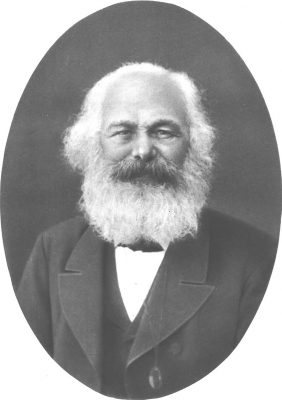Conflict Theory examines the imbalances in power that create different classes in a society. This theory studies the economic and political forces that ultimately lead social classes to revolt or wage war against the existing power structure. Conflict Theory was first advanced in the 19th century by Karl Marx, a German philosopher who promoted the development of communism. Marx believed that limited resources in society lead people to compete over them and that this competition is ingrained in society.
The German philosopher established his theory on this competition, explaining that the dominant social class exploits the weaker one. Marx stated that there are two social classes in a capitalist society, the bourgeoisie, and the proletariat.
The bourgeoisie owns the means of production, including materials, machines, and labor. This class does everything in its capacity to maintain its power and the existing order. This way, it can continue to accumulate more wealth. On the other hand, the proletariat is a social class that does not own the means of production and has no wealth. The only way it can create money on its own is by selling its labor to the bourgeoisie. Since the bourgeoisie, or business owners, always seeks to increase profits, it is unavoidable that it pays the proletariat a minimal amount. The proletariat does not have political power and needs just minimal wages to continue to survive, so it helplessly agrees to the dictates of the bourgeoisie.
According to Marx, this power imbalance is why the relationship between the two social classes revolves around coercion and not agreement. And so, this is the root of oppression experienced by the proletariat, or workers. Sociologists who came after Marx built on conflict theory and expanded it to study conflicts in politics, religions, races, and genders.
Karl Marx developed conflict theory out of his theory of history, mainly historical materialism. Historical materialism attempts to prove that human societies exist because of their most important pursuit: production through labor. This need to produce inevitably causes society’s material conditions or technology to develop. Conflict theory claims that the economic tension between business owners and workers is the root cause of the struggle between the two classes. For the oppressed social class to change its situation, it has to change the existing economic relationship.
Elements of Conflict Theory
According to Marx, the circulation of wealth in society causes social classes to exist. After these classes become aware of the division and unequal opportunities, revolution comes next. Marx identified two components in the production process: the modes of production, which are owned by the bourgeoisie, and labor, which is provided by the proletariat, and exchanged for wages. Marx said that the modes of production and labor were inseparable because the amount of labor applied to a product determines the value of that product. A worker’s wage for a single day is expected to be spent on the worker’s food and house rent, aside from replacing the business owner’s expenses on machines and materials used. Using this example, Marx pointed out that if there was excess labor, then there should be excess profit for the business owner to enjoy. This accumulated labor would then lead to the exploitation of the proletariat by the bourgeoisie.
With the continuous strengthening of capitalism, Marx thought that the bourgeoisie, which represents a small part of the population, would keep accumulating wealth and resume its oppression of the proletariat, which comprises the larger part of the population. Believers in this scenario liken this to the shape of a pyramid to illustrate the uneven distribution of power and resources. The top part of the pyramid represents the bourgeoisie, with all the power and wealth it enjoys, dictating its desires down to the workers. The bottom part of the pyramid represents the workers, who, despite having superiority in number, lack power and influence nonetheless. Marx asserted that the uninterrupted exploitation of the proletariat would necessarily ignite a revolution against the business owners. Marx claimed that this revolution was only a natural result of the inherent defect in capitalism. The overthrow of capitalism would then be followed by the establishment of socialism, which should lead to communism.
The Bases of Conflict Theory
Conflict theory operates on the assumption that humans are naturally selfish and constantly battle over insufficient resources. One group eventually gains more power and imposes its will on the weaker one. As time passes, the social classes gain a sharper awareness of the division, and a power structure becomes established.
Conflict theory operates on four assumptions:
Competition
All human interactions are based on competition for limited space, food, and time. This daily competition transforms into conflict. When conflict becomes entrenched in people’s daily lives, it creates more intense competition, and thus people divide themselves into groups or classes.
Imbalance in the Structure
The continuous struggle between the social classes will create a power structure between the oppressor and the oppressed. The powerful class will constantly seek ways to maintain and increase its power and maintain the structure’s imbalance.
Revolution
In a society where two social classes are in constant struggle, revolution is unavoidable. This upheaval could mean the destruction of the capitalists and the eventual abolition of the existing power structure. Marx claims that the only way to replace the old system with a new one is through revolution.
War
Another possibility that may result from the continuous struggle between classes and nations is war. War can unite people in a society, but it can also destroy a whole society. Society may never recover from it, but there are instances where war brought about the rise of new social orders. These two outcomes following a war have long been known by man.
